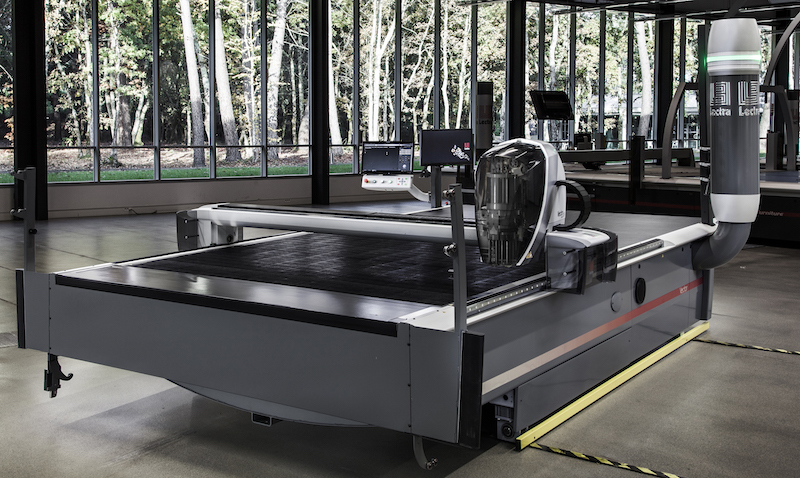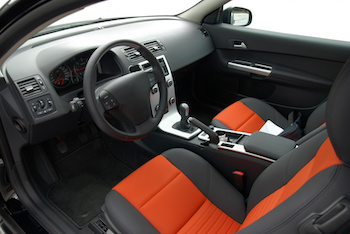
Digitalised manufacturing will play a critical role helping automotive interiors suppliers achieve the flexibility needed to remain competitive and relevant in today’s fast-moving digital economy
 With consumers’ growing appetite for high value-added yet competitively priced vehicles, automotive suppliers face increasing pressure to keep up with changing tastes and requirements while remaining profitable and operational. Strategic investment in digital manufacturing capability represents the unequivocal way forward to improve competitiveness while laying a solid foundation for future growth in a rapidly evolving manufacturing landscape.
With consumers’ growing appetite for high value-added yet competitively priced vehicles, automotive suppliers face increasing pressure to keep up with changing tastes and requirements while remaining profitable and operational. Strategic investment in digital manufacturing capability represents the unequivocal way forward to improve competitiveness while laying a solid foundation for future growth in a rapidly evolving manufacturing landscape.
Digitalised manufacturing technologies are transforming every link in the automotive manufacturing value chain, from product development to supply chain and plant operations, through to marketing, sales and services. The exponential rise of data and analytics and the increasing use of digital connectivity linking management and operations to consumers and physical industrial assets will bring tremendous value to suppliers prepared for the new age of digital manufacturing.
Without question, the nature of manufacturing itself is changing. With the advent of ‘big data’ and cloud computing, industrial manufacturing is moving toward a brave new world of smart connectivity underpinned by disruptive technologies. On the Internet of Things (IoT), cyber-physical systems communicate and cooperate with connected production solutions and humans in real time. However, to deliver on the promise of digitalised manufacturing, companies must look beyond the mere acquisition of technologies and prepare for transformational changes across the enterprise.
First step: a digital mind-setFor operational excellence and strategic transformation expert Norbert Audéoud, transforming business operations involves more than just new technologies – it entails a change of mindset, a revamped organisational model and a reshuffled ecosystem strategy. “The first point is to always start with the customer, bringing them new services and added value,” points out Audéoud. “Developing intimacy with customers is really the first building block. The second point is the need for genuine leadership. The awareness of top management regarding new technology and the impact on the business model must be high, so you have to invest a lot to open the culture to this new environment, not only from a technological point of view, but also with all the collateral impacts of these technologies. For example, changes required in organisation, management and communication, as well as in partnership building are all to be taken into consideration. The third point is to think big, start small, but go fast, at scale.”
Although these prerequisites require careful planning, Audéoud cautions that the time for companies to act is now. “The clock is running. What is difficult is acting immediately while bearing in mind a mid- to long-term view. The next big technologies will be in factories in the next 5-10 years, but you need to prepare for them as of now. So one of the success factors will be reconciling a short-term and mid-term approach.”

Opportunities in seating and interiorsToday, vehicle seating and interiors manufacturers seek to reduce their production costs; measure, raise and maintain operational performance; and improve their processes and project management. For Benny Daniel, vice-president of consulting, Mobility EIA, at Frost & Sullivan, digitalised manufacturing meets many of these challenges by increasing productivity, reducing machine downtime, shortening time to market, optimising inventory and lowering the cost of non-quality. In the long term, adoption of digitalised manufacturing can also mean preparedness enabling suppliers to compete on an altogether different level.
“The opportunities that we see are for the tier two suppliers, especially the leather cutters, who can move up the value chain and have direct, face-to-face interaction with the OEMs, which at the moment is restricted to the tier ones, in terms of innovation,” explains Daniel. “So I see this is where the biggest opportunity lies, and how advisory kinds of relationships can emerge in the automotive ecosystem, whereas today it is very transactional.”
Daniel believes that analytics and applications will play an important role in the development of these value-added services. “The typical OEM vehicle programme is generally a six- to seven-year programme. With the advent of software, programmes now take 2-3 years. Players within the value chain that do not invest in Industry 4.0 will lose the opportunity to offer consulting and advisory services.
“The question is, do you still want to retain the usual proposition of being a transactional player, or do you want to become an advisory player? The players that do not shift to Industry 4.0, in our opinion, will continue to be transactional. They will only be a resource where manufacturing or production is done, but will never be consulted from an advisory perspective. And this, in my opinion, will be the biggest loss if the value chain does not respond. The industry itself is changing its face and it is important that the value chain follow suit as well.”
Industry 4.0-ready technologiesToday’s industrial manufacturing model remains for the most part unchanged. It aims to decrease product costs by increasing the overall volume of products manufactured, thereby lowering unit costs. The automotive industry is no different, with suppliers primarily focused on optimising the costs and prices of products rather than optimising the capital required to manufacture them.
In the face of rapidly diversifying customer segments and expectations, the manufacturing base’s lack of flexibility has called this industrial paradigm into question. In an Industry 4.0 environment, the cost of complexity can now be absorbed by the reliability and precision of fully automated digital processes that are essentially standardised. Players in automotive are already deploying digital technologies to drive value. Larger tier one suppliers have already begun to use data analytics to optimise plant operations, improve equipment utilisation and enhance product quality. Smart, connected production solutions are processing data to better manage quality and inventory while new supply-network management tools are enabling a clearer view of the flow of raw materials and manufactured parts, streamlining plant operations and cutting costs.
Pioneering IoT in the cutting roomFor cutting room managers, managing connectivity, usage and data will take on increasing importance as both tier one and tier two suppliers follow the lead of their OEM supplier ecosystems. Integrated technology solutions manufacturer Lectra has set the industry standard in smart, connected cutting room equipment designed to capitalise on the value of an end-to-end digital value chain from design to cut execution.

A pioneering solution on the IoT, Lectra’s VectorAuto fabric-cutting solution has pushed the boundaries for speed, quality and reliability since its launch in 2007. Initially designed with 120 sensors, the Vector range immediately revolutionised the automatic cutting room for fabric. Today Vector features 180 embedded sensors to implement preventive and predictive maintenance. Vectors installed across the globe communicate in real time with Lectra’s five international call centres, where experts can immediately intervene remotely.
Smart capabilities – including remote monitoring and data-driven diagnostics – drive machine availability up to98%, making VectorAuto one of the most reliable systems on the market. As the undisputed reference for the fabric cutting room, with more than 3,000 units in operation, Vector has become the world’s best-selling fabric cutter.
In 2011, Lectra ushered in a new era in leather cutting for the automotive industry with VersalisAuto. With this revolutionary solution, Lectra launched the most advanced digital leather cutting solution on the market, delivering best-in-class quality and material gains impossible to achieve using die presses.
The smart technology embedded in VersalisAuto uses more than 200 sensors to provide Lectra customers with predictive maintenance in order to ensure maximum uptime and performance in the cutting room. It also allows Lectra consultants to collect data and run a comprehensive diagnosis with the aim of sustaining operational efficiency.
Designed to cut leather without compromise on productivity, VersalisAuto features the most powerful automatic nesting system for overall improvements in efficiency. In contrast with processes that require retooling for each order, Versalis lets suppliers increase flexibility and maximise savings while establishing a pathway to value-added Industry 4.0 processes.



































